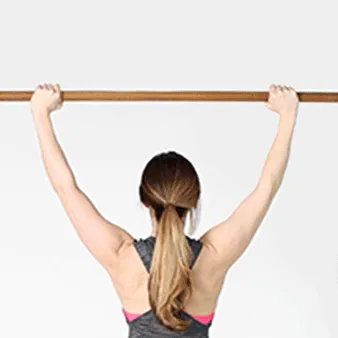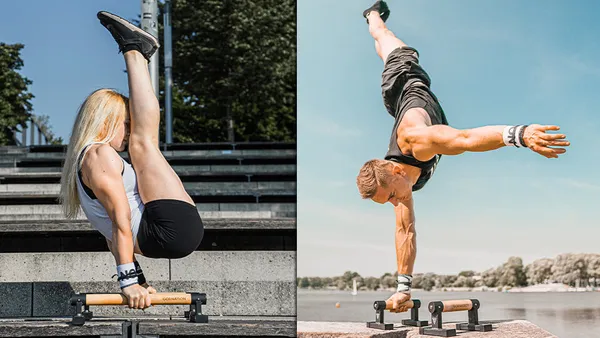Table of Contents
Calisthenics is a form of exercise that uses bodyweight movements to improve strength, flexibility, and endurance. It is a great way to get in shape without having to go to the gym or buy expensive equipment. Calisthenics exercises can be done anywhere, making it a convenient and accessible form of exercise. If you are looking for a way to improve your overall fitness, calisthenics is a great option. Kizworld offers a variety of calisthenics programs and resources to help you get started.
What Is the Meaning of Calisthenics? A Comprehensive Guide
Meaning of Calisthenics | Benefits of Calisthenics |
|---|---|
bodyweight exercises | Improves strength |
ancient Greek practice | Enhances flexibility |
improves agility, coordination, and balance | Boosts endurance |
Getting Started with Calisthenics | Calisthenics Programs | Staying Motivated | Safety Tips |
|---|---|---|---|
Start gradually | Beginner programs focus on basic exercises | Set realistic goals | Warm up before workouts |
Listen to your body | Intermediate programs introduce more advanced exercises | Find a workout buddy | Cool down after workouts |
Progress slowly | Advanced programs challenge experienced athletes | Track your progress | Use proper form |
Calisthenics Terms | Calisthenics vs Other Sports | Calisthenics in the Modern World |
|---|---|---|
Push-ups | Calisthenics uses bodyweight, while other sports use equipment | Calisthenics is accessible and affordable |
Pull-ups | Calisthenics focuses on compound movements, while other sports focus on isolated movements | Calisthenics promotes a holistic approach to fitness |
Sit-ups | Calisthenics requires less space, while other sports require more space | Calisthenics can be done anywhere, while other sports require specific facilities |
I. The Meaning of Calisthenics: A Comprehensive Guide
Historical Origins and Ancient Roots
Calisthenics, derived from the Greek words "kallos" (beauty) and "sthenos" (strength), is a form of exercise that utilizes bodyweight to improve physical fitness. Dating back to ancient Greece, calisthenics was an integral part of military training and physical education. Greek soldiers performed exercises such as push-ups, pull-ups, and squats to enhance their strength, agility, and endurance.
Over the centuries, calisthenics has evolved and gained popularity. In the late 19th century, Swedish physician Per Henrik Ling developed a system of calisthenics known as the "Swedish gymnastics" or "Ling system," which focused on promoting physical fitness and health. This system had a significant influence on the development of modern gymnastics and calisthenics.
Benefits of Calisthenics: Building Strength, Flexibility, and Endurance
Calisthenics offers a wide range of benefits, making it a versatile form of exercise for individuals of all fitness levels.
Strength Building | Flexibility Improvement | Endurance Enhancement |
|---|---|---|
Calisthenics exercises engage multiple muscle groups simultaneously, promoting overall strength development. Bodyweight exercises allow for gradual progression, enabling individuals to increase the intensity of their workouts over time. | Calisthenics incorporates dynamic movements and stretches that improve flexibility and range of motion throughout the body. Exercises like squats and lunges target major muscle groups, enhancing joint mobility and reducing the risk of injuries. | Calisthenics exercises challenge the cardiovascular system and improve endurance. The continuous nature of many calisthenics movements elevates the heart rate and promotes cardiovascular fitness, increasing stamina and overall physical performance. |
In addition to these benefits, calisthenics is accessible, requiring minimal equipment and space. It can be performed anywhere, making it a convenient and flexible form of exercise.
- Benefits of Calisthenics for Bodyweight Training
- The Best Calisthenics Videos and Tutorials
- Most Common Calisthenics Mistakes and How to Fix Them
The Meaning of Calisthenics: A Comprehensive Guide
II. Historical Origins and Ancient Roots
Calisthenics: A Legacy of Physical Prowess
Calisthenics, a discipline that harnesses bodyweight for physical development, traces its roots to ancient Greece. The term "calisthenics" stems from the Greek words "kalos" (beautiful) and "sthenos" (strength), reflecting the Greeks' pursuit of physical excellence. In ancient Greece, calisthenics formed an integral part of military training, preparing soldiers for the rigors of combat. The Spartans, renowned for their formidable army, incorporated calisthenics into their rigorous training regimen.
Calisthenics in the Modern Era
Calisthenics has evolved over the centuries, adapting to changing fitness trends and scientific advancements. In the 19th century, German physical education pioneer Friedrich Ludwig Jahn popularized calisthenics as a means of promoting physical fitness and national pride. Jahn's influence led to the establishment of "turnvereins," or gymnastics clubs, throughout Germany and beyond. Calisthenics also gained traction in the United States during the 20th century, particularly in the military and educational institutions. Today, calisthenics enjoys widespread popularity as a versatile and accessible form of exercise.
Year | Event | Significance |
|---|---|---|
Ancient Greece | Calisthenics used in military training | Foundation of calisthenics as a physical discipline |
19th century | Friedrich Ludwig Jahn popularizes calisthenics | Spread of calisthenics through gymnastics clubs |
20th century | Calisthenics gains popularity in the US | Incorporation of calisthenics into military and educational programs |
- The History and Origins of Calisthenics
- The Most Famous Calisthenics Athletes and Influencers of All Time
- The Best Calisthenics Exercises and Variations
Historical Origins and Ancient Roots
III. Benefits of Calisthenics: Building Strength, Flexibility, and Endurance
Improved Strength and Power
Calisthenics exercises engage multiple muscle groups simultaneously, leading to increased strength and power. Bodyweight exercises like push-ups, pull-ups, and squats challenge your muscles to work against gravity, building strength and improving overall fitness.Discover how to build muscle and strength with calisthenics
Exercise | Muscles Targeted |
|---|---|
Push-ups | Chest, triceps, shoulders |
Pull-ups | Back, biceps, forearms |
Squats | Legs, glutes, core |
Enhanced Flexibility and Mobility
Calisthenics exercises often involve dynamic movements that stretch and lengthen muscles. This improves flexibility and mobility, reducing the risk of injuries and enhancing overall physical performance.Learn how calisthenics can improve your flexibility
Increased Endurance and Stamina
Calisthenics workouts can be tailored to challenge your cardiovascular system, improving endurance and stamina. By performing exercises in circuits or for extended periods, you can increase your heart rate and boost your aerobic capacity.Explore the benefits of calisthenics for bodyweight training
Benefits of Calisthenics: Building Strength, Flexibility, and Endurance
IV. Types of Calisthenics Exercises and Their Variations
Bodyweight Exercises
Calisthenics exercises primarily utilize bodyweight as resistance, making them accessible and versatile. These exercises engage multiple muscle groups simultaneously, promoting functional strength and coordination. Some common bodyweight exercises include:- Push-ups: A fundamental exercise that targets the chest, triceps, and shoulders.- Pull-ups: An effective exercise for developing back muscles, biceps, and grip strength.- Squats: A compound exercise that strengthens the legs, glutes, and core.- Lunges: A dynamic exercise that improves leg strength, balance, and flexibility.- Planks: An isometric exercise that engages the core, shoulders, and back.
Gymnastics-Inspired Exercises
Calisthenics also incorporates elements from gymnastics, such as handstands, planches, and muscle-ups. These exercises require advanced strength, flexibility, and coordination. They challenge the body in unique ways and can significantly enhance overall fitness.- Handstands: An inversion exercise that strengthens the shoulders, wrists, and core.- Planches: A static hold exercise that targets the shoulders, chest, and core.- Muscle-ups: A compound exercise that combines a pull-up and a dip, requiring significant upper body strength.
Street Workout Exercises
Street workout exercises are a form of calisthenics that utilizes urban infrastructure, such as bars, benches, and walls. These exercises often involve dynamic and explosive movements, promoting agility, power, and coordination.- Bar muscle-ups: A variation of the muscle-up performed on a horizontal bar.- Weighted dips: A weighted variation of the dip exercise that increases resistance.- Plyometric push-ups: A dynamic push-up variation that incorporates a jump at the top of the movement.
Exercise | Target Muscles | Difficulty |
|---|---|---|
Push-ups | Chest, triceps, shoulders | Beginner |
Pull-ups | Back, biceps, grip | Intermediate |
Handstands | Shoulders, wrists, core | Advanced |
- How to Do a Muscle-Up
- The Best Calisthenics Gifts and Accessories
- The Best Calisthenics Quotes and Motivation
Types of Calisthenics Exercises and Their Variations
V. Conclusion
In this article, we have explored the meaning of calisthenics, its benefits, and how to get started with a calisthenics routine. Whether you are a beginner or an experienced athlete, calisthenics is a great way to improve your fitness and overall health. So what are you waiting for? Give calisthenics a try today and see for yourself how beneficial it can be.